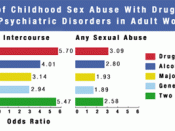Drugs and drug usage behavior have been proven to be linked to crime in several ways. It is a crime to use, possess, manufacture, or distribute any drugs classified illegal. The effects of drug related behavior effects society in many ways, daily. Many drug users come from all walks of life. But this paper focuses on issues dealt with drug users incarcerated, and what efforts are being done to help treat not only their criminal minds, but their use and abuse of drugs and alcohol. Drug dependence and abuse among incarcerated populations is a severe reality that complicates the task of rehabilitating offenders. Estimates of serious drug involvement among offender's points to the urgent need for effective interventions, and available indicators show drug use among arrestees to be at epidemic levels. During the 1970s it was pointed out that only about half the Nation's State prisons offered drug abuse treatment (Tims 1985), and only about one-quarter of all jails in the United States had any provision for treatment (Newman and Price 1976).
During the 1980s the prison population increased dramatically to more than half a million and the overall prevalence of drug involvement among incarcerated offenders also rose markedly. The Bureau of Justice Statistics (BJS) and the National Center on Addiction and Substance Abuse (CASA) estimate that from 60% to 83% of the Nation's correctional population have used drugs at some point in their lives; this is twice the estimated drug use of the total U.S. population (40%).
A common criticism of offender rehabilitation programs is that "nothing works"; that is, nothing has been shown to evoke such dramatic improvements as to satisfy the program critics. In fact, almost any student of programs that have been tried in correctional settings can point to some concrete achievement. Indeed, the case for...


